 Following the Flashpoint event, DC Comics did something that very few thought was possible in modern comics: they scrapped everything. Beginning with 52 number #1 issues in September 2011, The New 52 was the first line-wide reinvention of DC’s core characters in over seven decades. More than simply renumbering, it took characters from all of the publisher’s imprints (DC, Vertigo and WildStorm), wiped the slate clean and aimed to build them all again from the ground up.
Following the Flashpoint event, DC Comics did something that very few thought was possible in modern comics: they scrapped everything. Beginning with 52 number #1 issues in September 2011, The New 52 was the first line-wide reinvention of DC’s core characters in over seven decades. More than simply renumbering, it took characters from all of the publisher’s imprints (DC, Vertigo and WildStorm), wiped the slate clean and aimed to build them all again from the ground up.
Indeed, if it is arguable that if the Modern Age of Comic Books can be traced to the changes that came out of Crisis on Infinite Earths (1986), and the “Dark Age” grew out of the gritty mid-1980s, then surely it finally came to an end with the New 52. In its place we have the Contemporary Age of Comic Books, one in which artistic and creator driven work reflects back on what has come before as well as looking ahead to the future. While Grant Morrison argues (in Supergods) that a Renaissance immediately followed the Dark Age, the very nature of corporate synergy with multimedia and entertainment distinguishes even that age from what we are seeing now. While the artistic approaches and techniques of the creators that typify this new age can be traced back at least as far as the parallel art movements from which we borrow the term, it is convenient to think of this as a whole new era of comic books. For the last few years at least, we’ve spoken of DC Comics in terms of pre and post-Flashpoint, just as the term pre-Crisis entered comics parlance for almost 30 years.
In this final chapter of The History of Green Arrow, we look at the reinvention of the character for the Contemporary Age, the search for an identity within this period and the massive impact of the television series Arrow on both Green Arrow and superhero entertainment more broadly.
- The History of Green Arrow Part 1 – From Golden Age to Golden Beard (1941 – 1969)
- The History of Green Arrow Part 2 – Hard Travelling Through the Wilderness Years (1970 to 1979)
- The History of Green Arrow Part 3 – Detectives and Dark Knights (1980 – 1986)
- The History of Green Arrow Part 4 – Longbow Hunting Through the Wonder Years (1987 – 1993)
- The History of Green Arrow Part 5 – At the Crossroads of Death with Connor Hawke (1994 – 2000)
- The History of Green Arrow Part 6 – Quiver through Brightest Day (2001 – 2011)
“Oliver Queen is a billionaire with a mission — to do everything he can to make the world a better place.” – J.T. Krul, June 2011
The New 52: Introducing Green Arrow
On the 31 May 2011, DC Comics made the announcement that they would “launch a historic renumbering of the entire DC Universe line of comic books with 52 first issues”. It was a bold move, one aimed at gaining new readers who “did not want to face the daunting task of knowing and understanding previous events and intimate character history”. Indeed, at the time, Action Comics and Detective Comics were up to issue #904 and #881 respectively at the end of their run. Three years later, it remains the status quo for DC Comics.
When Green Arrow #1 (Volume 5) was first solicited on 10 June 2011, it was confirmed that previous Green Arrow scribe J.T. Krul would continue to write this new version of the character. However, despite Brett Booth’s initial cover showing a very familiar-looking Oliver Queen with a beard an an updated outfit, it was immediately obvious that things were going to change. “Oliver Queen is an orphan who grew up to fight crime as the Green Arrow, a billionaire playboy who uses his fortune to become a superhero – able to fight the most powerful super-villains in the universe with nothing but a bow and arrow. JT Krul will write GREEN ARROW #1 with art by superstar artist Dan Jurgens.” Ollie was now an orphan, but it barely began to describe the modern approach to the Emerald Archer.
Prior to the launch in September, Krul maintained little would change from his previous incarnation, emphasising that this was not another retelling of Ollie’s origin. (That wouldn’t come for another few years, and under a different writer). Speaking with CBR in June 2011, he discussed the essence of Green Arrow not changing: “He is a hero, plain and simple, fighting against abuses of power in every form. That’s the core of Green Arrow, and that’s not changing. We’re not doing an origin story.” He added to Newsarama around the same time that there would be a certain level of Ollie balancing off his wealth against his fledgling notions of social injustice, saying there would be “a bit of that Robin Hood vibe as he strikes out against the greatest threats to people’s lives and freedoms. He may have that ivory tower, but in his heart he is a man of the people — and he always will be. The problem today is that the threats out there stretch way beyond the city limits, so Green Arrow will have to expand his territory, so to speak. Think globally.”
Ollie was planned to become something of a cross between Bruce Wayne and Steve Jobs, the head of a division within Queen Industries called Q-Core, perhaps mirroring the similar role Wayne took in Applied Sciences within the Christopher Nolan film universe. Krul explained this approach to Comic Vine in August 2011, as the release date rapidly approached:
Oliver Queen is also taking full advantage of his role within Queen Industries to develop his own division called Q-Core, something of an Apple for the DCUniverse. Sure, they’ve created the Q-Phone and Q-Pad, but they delve into areas beyond personal electronics and computers, doing everything they can to built a better tomorrow for the world.
Krul also added to Comic Book Movie that Ollie would be moving back to Seattle, just as he did in the MIke Grell era. “I really wanted to get Oliver back into the true Emerald City and give the book that added sense of realism.” The stage was set, and the comic book reading world held its breath as DC launched one of the most ambitious projects in its eight decades of publication. Along with all of the other characters of the DCU, we were about to meet a new Green Arrow for a new Contemporary Era.
A misfired Arrow: trimming the beard of discontent
With the benefit of hindsight, it strikes us that there was a big editorial change in direction between the announcement and the first issue being released. After all, DC Entertainment would have already had the forthcoming TV show Arrow on their horizon, and the deities of corporate synergy undoubtedly saw a chance to bring a new and younger Oliver Queen to comic books. So for the first time since 1968, Queen lost his trademark beard. This might have been the first aesthetic indicator that comics readers were entering a new contemporary age.
Despite not being an obvious origin story, at least not in the overt way that Grant Morrison’s Action Comics reboot was, this was a hard reset on Oliver Queen. Much of his previous history had been erased, including his long-standing relationship with Black Canary. Jarringly, allusions were made to a falling out to Roy Harper (Arsenal/Speedy in the old currency), who had graduated to his own book with former Titans in Red Hood and the Outlaws. (As a sidebar, Roy was now covered in tats, and wearing a baseball cap to demonstrate his edginess, apparently).
In the opening arc “The Midas Touch”, Queen is ostensibly running Q-Core, or not running it properly to the chagrin of the head of the board of directors Emerson, an old friend of his father. Ollie’s band of merry men and women now included the Oracle-like hacker Naomi and an engineer named Jax, who aided his extra-curricula activities from afar. For new readers, Ollie was another jet-setting billionaire with a tech support crew. For old readers, there was very little trace of the Green Arrow they knew beyond the obvious moniker.
Early reviews were mixed on this new take on the character. Leroy Douresseaux at ComicBookBin praised the book, noting that “writer J.T. Krul immerses the series in corporate boardroom melodrama and international intrigue, or at least the superhero version of it”, while Major Spoilers called it “a step in the right direction”. Comic Book Resources was more subdued, giving the first issue 2.5 stars and declaring that “the book needs a little more than star power and recognizable creators to offer up a reason to keep picking it up.” Crave Online blasted the book as “amazingly on the nose and it lacks any subtly.”
Readers appeared to agree: Green Arrow debuted at #28 on the charts (as reported by Diamond Comic Distributors), and was at #57 by the end of the year. Indeed, by the time Green Arrow #12 dropped a year later in August 2012, it had bottomed out at #109 on the charts. (It would continue to languish down there until a new creative team took over in February 2013).
Creative crisis on New Earth
Behind the scenes, the cracks were well and truly starting to show as well, part of a pattern of widely reported editorial issues that DC and its creators were having during this period. The first issue was barely on the shelves when Newsarama reported (on 20 September 2011) that Keith Giffen would be replacing Krul as the ongoing series writer, co-writing with artist Dan Jurgens. In that same article, Giffen spoke about the direction of his planned tenure:
If anything, I’m trying to be the opposite of the decompressed comic book, not that I’m going to rush things through… but I would like to see the stories move along at a nice pace. Get in, tell the story, get out and guess what? There’s another story to be told! Isn’t that wonderful? That’s pretty much the way I’m working on all my projects.
Less than a month later, legendary Daredevil writer Ann Nocenti was announced (via DC’s blog The Source) to replace Giffen as the ongoing writer for the series.
“I’m thrilled to be taking over Green Arrow. What I adore about the Arrow is his recklessness. He’ll shoot off on an impulse, dispatch someone if they deserve it; his heroism is instinctive. I start with a crazy trilogy that is chock full of surprises. Arrow gets a new woman (and boy, is it complicated), flings himself out of his old life into a new one, and meets a new world class villain. It’s gonna be a wild ride!”
On paper, Nocenti seemed like a breath of fresh air to the franchise, bringing the experience of her widely praised 1980s/early 1990s work on Marvel’s Daredevil, including the introduction of Typhoid Mary, the demon Blackheart and her co-creation of the character Longshot with Arthur Adams. Her first issue was Green Arrow #7 (“Triple Treat, Part 1: Ménage à Quatre”, May 2012), and it immediately sought to take Ollie out of the base of operations that he had already been neglecting. Throughout the “Triple Threat” arc, if he isn’t attempting a foursome with triplet assassins, he’s running from genetically modified wolves in the Yukon. It’s an incongruous take on some of the adventures of the ‘old’ version of the character, which is perhaps the point, but it was so far removed from the original concept of an urban hunter as to make Green Arrow something of an anomaly.
Nocenti addresses this directly in Green Arrow #11 (July 2012). Queen has to face the consequences of his globe-trotting with the arrival of two other “Robin Hoods” in his city, and is faced with a child asking him “What the hell are you doing for the people of this city?”. It’s a panel that won’t be lost on Green Arrow fans, who will remember some citizens asking Green Lantern the same thing back at the start of the famous Hard Travelling Heroes arc of the 1970s. Yet that same arc (continuing through to Green Arrow #13) sees Ollie fighting undead grandparents in China, indicative of the lack of clear direction for this book.
Even Judd Winick, one of the longest-running writers on the character, didn’t truly excite with his Green Arrow #0 (September 2012) one-shot deal at re-envisaging the origins of the archer. The pre-island storyline conclusively cans most of the events of the magnificent Green Arrow: Year One, and with the introduction of disposable new villain Iron Eagle, it turns one of the best character arcs in comics history into nothing more than a footnote, with a super-powered slugfest in the midst of a hedonistic party on an oil rig. As the book spends a fair bit of time carefully introducing the character of Tommy Merlyn, who would be one of the main supporting characters in the TV show that had just begun, the issue seemed more like a set-up for future events than an origin story.
Green Arrow stumbled through the next few issues, including being the middle chapter in a crossover with Savage Hawkman #13 and Deathstroke #14 (“Hawkman Wanted”), and a two-parter (“Harrow”) that ended Nocenti’s run. Yet artistically, it was a wildly experimental period for the character, with at least five different artists tackling duties during this time. Jurgens by no means set the template for the series, although the reworked uniform and the tech-heavy ephemera came from these early issues. Harvey Tolibao’s art might have been divisive (Newarama‘s David Pepose called out the “distended anatomies and weird, twisty angles”), but by #12 it was hitting a groove that somehow mirrored the weirdness of the book itself. Freddie E Williams II‘s art came closest to capturing the fluidity needed to sell this “edgier” version of the character. Yet only 18 months after its launch, Green Arrow was lining up for yet another refresh.
The Even Newer 52: Jeff Lemire and Andrea Sorrentino
“Basically we just tear everything down…” – Jeff Lemire
When Dan DiDio first approached Lemire to write the flagging title, Green Arrow hadn’t really been a character the writer had previously connected with. “Other than seeing him in Justice League,” Lemire told us in an interview with Behind the Panels in January 2013, ” he was never really someone that I cared for as a kid. I think that maybe that was just because back then, he didn’t really have his own monthly book or anything”. Yet he immediately saw potential in the character:
“When I got the book, I was looking for another DC project. Something that was a little bit closer to the centre of the DC universe than Animal Man or Swamp Thing, and Justice League Dark …they’re all really horror books. They’re kind of off in their own little corner. I thought it would be fun to do something a little closer to the centre of the DC universe but still…I could have my own take on it, and bring my own voice to it. When Dan DiDio suggested Green Arrow to me, it just seemed like the potential was there to do a really cool noir crime, kind of superhero epic. When I thought about it that way, I got really interested in the character.
I also really like the character of Oliver Queen now, just in terms of the redemption story of this guy who was born into privilege. He had everything he could ever want handed to him, yet he could never really live up to this legacy his father had. So in my story, basically we just tear everything down and he loses everything right away and he has to rebuild himself. So I kind of like redemption stories. There was definitely a lot there for me to play with.”
For all intents and purposes, Green Arrow #17 was a soft reboot of the title, eschewing much of the previous aesthetic and storyline for Jeff Lemire’s own take on the world. Much like he did in the late 1960s, Green Arrow awakens to find that Emerson has sold Queen Industries to Stellmoor International, a company that later turns out to be a front for Simon Lacroix and connected to The Outsiders clan. However, at the same time, Ollie is framed for Emerson’s murder, his Q-Core base is detonated, and is suddenly on the run without money or resources. What initially becomes a very personal pursuit against the archer Komodo (Lacroix’s alter ego), becomes a voyage of self-discovery that leads Oliver Queen to discover more about his past, his family heritage, and the very meaning of the mantle that he’s adopted as a costumed vigilante.
Lemire takes the opportunity to finally give us one of the first new takes on the origin story in years, Green Arrow: Year One notwithstanding. Beginning with “The Kill Machine” arc, Lemire posits that Queen landing on that fateful island with nothing but a bow was not merely happenstance. It was all part of a larger quest put in place by his father, and a mythology around the Arrow Clan and several other weapon-themed clans known collectively as the Outsiders. Indeed, in searching for the truth about a relic known as “the green arrow”, Oliver discovers that not only is his father Robert still alive (and in a wonderful twist, sporting the classic Green Arrow beard), but was one of his masked tormentors, and as such had a direct hand in his transformation from spoiled playboy to costumed vigilante. A disgusted Ollie returns to America to confront and defeat the Outsiders, but in many ways it is the conclusive moment that Lemire sheds the shackles of the New 52’s false start and forever left his mark on Arrow mythology.
It wasn’t just Green Arrow’s origin story that Lemire gave a new twist to, reaching deep into the Mike Grell legacy and putting fresh spins on some of Grell’s most iconic characters. In fact, Lemire firmly cited Grell as a strong influence on the kind of story that he wanted to tell with his Green Arrow, going so far as to name a team of villains in his final story the “Longbow Hunters”. In the same 2013 interview, he told us:
“That’s the only version I had any interest in doing. That was sort of right away what I pitched, a return to the Mike Grell era. This hero of the gutters, this hero of the street, really urban hunter kind of character. That’s really what I was after. You know, the Mike Grell stuff holds up quite well actually, when you read the whole run that he did. Some amazing character work in there. That’s really what inspired me, that and also Denny O’Neill’s Question comics from the 80s, I really love those. More recently, stuff like [Brian Michael] Bendis’ run on Daredevil. Some of the more recent Batman stuff. These really, kind of, street-level superhero stories that are successful. It’s the kind of thing I’m trying to tap into without ripping those guys off.”
Shado, one time antagonist and love interest for the pre-Flashpoint Oliver Queen and another Grell creation, is re-envisaged as Robert Queen’s former lover. She is reintroduced as the captive of one of Ollie’s most famous rogues, Count Vertigo, himself now known as Werner Zytle, he rules over the small nation of Vlatlava, maintaining ties to the criminal underworld. It is here that Ollie rescues Shado from Vertigo’s clutches, later discovering that she has a daughter Emiko by Ollie’s father, who would later go on to become an ally of Queen’s. (Vertigo’s new origin is explained in Green Arrow #23.1, where he is exiled to Canada and his own mother sells him for experimentation, resulting in his enhanced Vertigo implants). One of Dennis O’Neil and Jim Berry’s creations, Richard Dragon – a character frequently used in Chuck Dixon’s Green Arrow/Connor Hawke stories, is also recast as a villain during the epic “The Outsiders War” run (Green Arrow #26 to #31).
Andrea Sorrentino pushes the mainstream boundaries with the art in this run, experimenting with panels and layout in a way that hadn’t been seen on this character since Trevor Von Eeden’s art in the 1983 Green Arrow mini-series. Working with colourist Marcelo Maiolo to bring a look and feel not seen in many other books within the New 52, we can almost feel the arrows sinking into skin when they hit their targets, thanks to a clever motif that both drains and contrasts colours within a given panel. Lemire explained the development of this technique:
“I had this idea where certain panels, key moments in action in the layouts, would actually stay in black and white with just green as a spot colour. We did that throughout the first arc, and it really worked well. It’s a mix of colour and black and white, and strange visual techniques he tried himself. It’s pretty cool. It’s actually pretty experimental for a monthly superhero comic.”
Every issue brought a new innovation or perspective on how Green Arrow’s story could be told. The debut issue for the team (Green Arrow #17) introduced the black-and-white highlights, and by Green Arrow #19, complex action sequences play out against a single background image, the figures moving in a miniature shadow play across slender red frames. By the time we get to Green Arrow #21, the artist manages to take our breath away with an overhead shot of the island that looks straight out of a nature documentary, albeit one filtered through a heavy dose of hallucinogens. Sorrentino quite literally flips the script, with a nightmarish vision of Green Arrow’s various rogues surround him as he comes tumbling out of the top of the page, and playing out a vision quest completely upside-down. Green Arrow #22 that provide one of the most “mind-blowing” images of the series (pictured above), perhaps the best visual representation of Vertigo’s powers to date. Yet in a series that experimented with telling Shado’s flashback in silhouette on an old sepia toned parchment (Green Arrow #23) with distinct Japanese artistic influences, or used whole pages of onomatopoeia to frame action in orange and red (Green Arrow #28), it is difficult to single out a handful of top moments in Sorrentino’s art. As an entire run, it’s a thematic and artistic whole that grows organically as the series progresses.
The same could be said for all of Lemire’s arc, which ultimately came to a conclusion of sorts in the event tie-in Green Arrow: Futures End #1 (September 2014), showing what would happen to Lemire characters 5 years into the New 52’s future. The first issue of weekly The New 52: Futures End tie-in had seemingly “killed off” the archer, a tease for long-time fans as it was the first time since the reboot that they had seen the character with his familiar facial hair. Emiko is now the city’s Green Arrow, with Naomi serving as the new Dart. Vertigo has henchmen with low-level versions of his powers running amok through town, while an older and raggedly bearded Oliver Queen returns, but with a new mission tying into the crisis on Earth 2. Newsarama (and Behind the Panels)’s Richard Gray concluded: “Ultimately, Lemire and Sorrentino’s Green Arrow can proudly stand next to Mike Grell, Kevin Smith or Judd Winick’s modern takes on the character.”
Lemire’s mark will be felt in Green Arrow books for some time to come, also introducing his version of the character into Justice League United (from May 2014), where he continues to write the character after leaving the main title. The series allows the character to showcase his skills in a team environment alongside Animal Man, Adam Strange, Martian Manhunter and Stargirl. It was a direct successor to Justice League of America (February 2013 – May 2014), where each member was a counterpoint to one of the powerful members of the main Justice League. Despite being radically re-written from his portrayal in the 1960s and 1970s, Green Arrow remains the much-needed outsider to the system within the contemporary DC universe.
Beyond the Comics: Arrow
With the end of the long-running Smallville in 2011, during which time the Green Arrow character (played by Justin Hartley) became known to viewers of The WB (and later CW) series, the network decided it was time that the archer had his own series. On 12 January 2012, it was revealed that executive TV producers/writers Greg Berlanti and Marc Guggenheim, who has also both worked on Warner’s Green Lantern (2011) film, would be working on a new Green Arrow series with Andrew Kreisberg, who had previously written for the comic series in 2009. A week later, the show was officially dubbed Arrow when it received a pilot order at the CW. For the first time since that character’s inception in 1941, Green Arrow would be headlining his own TV series.
In February 2012, it was announced that Canadian born Stephen Amell would be cast as Oliver Queen and his vigilante alter ego. Amell had only been in a handful of films in both Canada and the US, but already had a Gemini Award under his belt for his role in Canadian sci-fi series ReGenesis. He had also grabbed some attention in major recurring roles in HBO’s Hung and ABC’s Private Practice throughout 2011.
Arrow, now in its third season, takes elements from various eras of the comic and crafts its own narrative around it. In Arrow‘s continuity, Oliver Queen has returned to his native Starling City (for some reason changed from the comic book “Star City”) after being shipwrecked and spending five years on an island. Scarred and now a highly skilled archer and martial artist, he uses his newfound skills to amend for his father’s mistakes and clean up the city as a costumed vigilante. He must simultaneously deal with the fallout of his relationship with Laurel Lance (Katie Cassidy), whose sister Sara was killed during the shipwreck while engaged in an affair with Ollie. Their father is Detective Quentin Lance (Paul Blackthorne), who not only blames Ollie for Sara’s death, but is actively trying to bring down ‘The Vigilante’. Yet this version of Green Arrow has a support crew in the beautiful and nerdy Felicity Smoak (Emily Bett Rickards), who not-so-secretly pines for Oliver; bodyguard-turned-friend John Diggle (David Ramsey) and eventually aspiring vigilante Roy Harper (Colton Haynes). It’s success was almost instant, attracting a then record 4.14 million viewers to the CW for the pilot. The all-important Rotten Tomatoes score for the first season was 86%, the critic consensus reading “CW nails the target with Arrow, a comic book-inspired series that benefits from cinematic action sequences, strong plotting, and intriguing characters.”
“[A] show about an urban hunter, albeit one with a parade of shirtless men…”
Comic-Con sizzle reel for Arrow: Season 1 (2012)
From the second season (9 October 2013 – 14 May 2014), few could argue that Arrow wasn’t embracing its comic book roots. Gradually moving away from the CW-style drama and focusing more on being a solid weekly dose of hero and villain confrontation, the sophomore season was about Oliver Queen’s journey from vigilante to his rightful place as hero. Largely built around the growing confrontation between Oliver Queen and his old nemesis Slade Wilson, he still blames Ollie for the death of his love Shado (Celina Jade), and is hopped up on the strength-inducing drug mirakuru.
Critics universally agreed that the “second season of Arrow boasts more fantastic action, as well as a widening cast of intriguing, richly written characters.” Right off the bat, the second season introduces the classic pairing of Arrow and Black Canary, with a shocking twist that Sara Lance (Caity Lotz) survived the shipwreck and trained with the League of Assassins. In the episode “Birds of Prey”, Huntress and Black Canary share a team-up moment to the delight of fans, and Roy slowly manages to put aside his anger and take on the mantle of the Arrow’s sidekick. The season also introduced two more incredibly important institutions from comic book lore with A.R.G.U.S. and S.T.A.R. Labs. The former, headed up by Amanda Waller (Cynthia Addai-Robinson), modelled after her New 52 counterpart, introduced a version of the Suicide Squad to television, a precursor to the 2016 cinema version of the team. More importantly, the episode “The Scientist” (written by Andrew Kreisberg and Geoff Johns) introduced Barry Allen (Grant Gustin), who would be given his “origin story” as the costumed hero The Flash the following week on “Three Ghosts” (in a teleplay by Geoff Johns & Ben Sokolowski). It was a back-door pilot for the CW’s next big project: The Flash.
Season 3 (2014 – 2015), still being screened at the time of writing, gave a new twist not only on the established continuity, but on Ollie’s origin as well. With the revelation that Ollie didn’t spend his entire five-year absence on the island, the dual narrative was now split between modern day Starling City and Hong Kong, where Ollie meets the Japanese Tatsu (Rila Fukushima), effectively Katana from the comic book series. With the early death of Sara, the series slowly built on the notion of Laurel training to take her sister’s place as Black Canary. With another archer on the loose, Roy officially took on the mantle of Arsenal, complete with matching red costume. Ray Palmer (played by former Superman Brandon Routh) was introduced as a savvy businessman and futurist, teasing his comic book role of The Atom. Even Thea was given something to do as she trained under her father Malcolm Merlyn. Yet one of the biggest occurrences of the year, at least in the first half of the season, was the crossover between The Flash and Arrow, bringing superpowers and the Arrow universe together for the first time in live action television. It all appeared to be leading to the introduction of Ra’s Al Ghul (Matthew Nable), a villain familiar to cinema audiences from Christopher Nolan’s The Dark Knight trilogy of Batman films.
Comics and TV: A Perfect Union?
The popularity of the TV show suddenly elevated Green Arrow to a higher echelon at the DC ranch, and it could be argued that the New 52 had been slowly building its way towards aligning comic book Green Arrow with his TV counterpart. After all, Lemire had introduced a version of John Diggle into his run with Green Arrow #24 (December 2013), a character who had previously existed purely in the television universe. However, Lemire had initially said that he felt no editorial guidance to follow the TV structure, telling us in that earlier interview that the comic and TV series “really developed separately, and even now there’s no pressure for me to try and make the character more like the TV show version or make the storylines sort of in line with what they’re doing.” To his credit, Lemire carved out something that was wholly unique to the comics, although his departure would ultimately mean some changes.
In early July 2014, it was announced that Arrow writers Kreisberg and Sokolowski would be also taking over regular writing duties on the monthly Green Arrow title, with art from Daniel Sampere. ”We really want to bring the old-school Oliver Queen voice back to the character. In other words, the opinionated, liberal Robin Hood-esque hero that has fall through the cracks a bit,” Sokolowski told the LA Times. “Our goal with this comic is to make it an echo of the TV series. It’s a way to bridge the two universes. That being said, we’re not trying to make this “Arrow: The Comic.” That’s what the digital tie-ins are for.” (Both writers had worked on the “digital tie-ins”, a digital-first comic simply called Arrow that filled in the gaps between episodes. More on that below in “Arrow goes digital”).
As we noted when Green Arrow #35, the first issue from from their run, dropped in October 2014, “from opening lines of “My name is Oliver Queen”, it seems as though the book and the show were destined to merged into one.” Much like Lemire did when he took on the character, Kreisberg and Sokolowski conveniently brushed aside Emiko and Naomi as being “somewhere else” for the purposes of their debut issue. Curiously, Green Arrow is kept out of costume for most of the first issue, a key sequence being a meeting with Bruce Wayne and Lex Luthor, who want to jointly buy into Queen Industries and help change the world with Ollie. When he does suit up, he is sent headlong into meeting with Felicity Smoak, another TV creation (albeit one that had a similarly named comics analogue pre-Crisis). Sampere’s art is a shock to the system after Andrea Sorrentino’s groundbreaking work over the previous 18 months, his utilitarian feel to the costume replaced with the original “plastic” New 52 designs. “I think the version Ben and I are going for,” Kreisberg said in that same LA Times interview, “[is] an amalgamation of the TV version and his comic book persona.” Yet, for the moment at least, it ultimately feels like a step backwards, a move away from Lemire’s layered storytelling, one that gave us hope for a return of something close to the “old-school” version of Green Arrow.
Arrow goes digital
On 14 September 2012, DC Entertainment announced that there would be a new digital first series based on the TV show Arrow. It would feature stories from the show’s executive Marc Guggenheim and Andrew Kreisberg, it was billed as “a weekly comic which ties directly into a TV series with stories that fill in important gaps in the television narrative and written by the show’s writing staff”. It launched via DC’s digital app on the TV show’s launch date of 10 October 2012, a day that DC Entertainment declared “Arrow Day” across North American comic book stories with a print copy of Arrow #1 Special Edition featuring a cover by none other than Mike Grell. Monthly print editions followed from 28 November 2012, and for the first time in Green Arrow’s seven decade history, there were two monthly Green Arrow titles on the stands. After all, if the Batman family could have a dozen monthly titles, sure the Emerald Archer deserved a second one?
For a media tie-in comic, a phenomenon notoriously associated with unknown artists and typically targeted at non-comics readers, there was a surprisingly large number of Green Arrow veterans involved. To begin with, Mike Grell himself not only provided the cover art for the first two issues, but interior pencils on several of the issues. This was the first time he had done so for the character since the 1990s. With TV series writers Guggenheim, Kreisberg, and Sokolowski, also attached to the book, it kept a consistent tone with the television series and provided potential new comics readers with something familiar from the on-screen version.
In 2014, the book took a slightly different track and relaunched as Arrow: Season 2.5, aimed at bridging the gap between the second and third seasons of the show. Guggenheim’s debut story is actually the first time we see a proper team-up of Roy Harper and the Arrow as a double-act, preparing take down a set off drug lords at 30,000 feet.
Beyond this, there was also a set of online videos that were aimed at corporate synergy more than storytelling. Sponsored by Bose, the six-parts of Arrow: Blood Rush were largely pieces of product placement for the Bose brand, but they starred Emily Bett Rickards, Colton Haynes and Paul Blackthorne as their respective Arrow characters. They don’t feature Stephen Amell, and involve a loose plot around Roy coming to meet Ollie, and Detective Lance requesting Felicity to do some blood sample work. To date, these are yet to appear on an official DVD or Blu-ray set, presumably due to the advertising deal now being over. They have been removed from official sources online, but you don’t have to be Felicity Smoak to track down a decent copy on YouTube.
Further Beyond the Comics
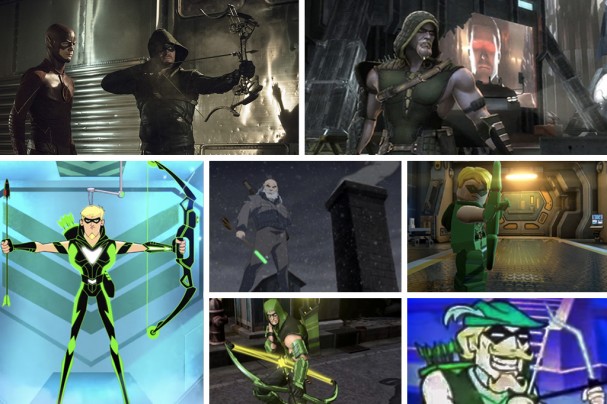 In 1973, Green Arrow made his debut TV appearance in the animated Super Friends episode “Gulliver’s Gigantic Goof”. He did not appear again in any media beyond the comics until 2004 in Justice League Unlimited. That he now has his own live action TV series, one that spawned a spin-off and several crossovers with The Flash, is indicative of how far Green Arrow’s star has risen in the last decade.
In 1973, Green Arrow made his debut TV appearance in the animated Super Friends episode “Gulliver’s Gigantic Goof”. He did not appear again in any media beyond the comics until 2004 in Justice League Unlimited. That he now has his own live action TV series, one that spawned a spin-off and several crossovers with The Flash, is indicative of how far Green Arrow’s star has risen in the last decade.
When Batman: The Dark Knight Returns Part 2 adapted the second half of Frank Miller’s seminal graphic novel as an animated feature film, Oliver Queen (voiced by Robin Atkin Downes) made an appearance, missing an arm but still fighting the good fight.
Green Arrow has appeared in several video games during the last few years. Infinite Crisis (2014) came complete with an array of trick arrows and a 5-minute online video profile, while LEGO Batman 3: Beyond Gotham (also 2014) included an Arrow DLC pack that saw Arrow (voiced by Stephen Amell), Huntress and Deathstroke as downloadable characters. Yet his most significant playable role was Injustice: Gods Among Us (2013), a fighting game that sets heroes against heroes, and villains against everyone. The tie-in comic, now in its third season. is written by Australia’s Tom Taylor and illustrated by various artists. Going on to become a #1 New York Times Bestseller, one of the more memorable relationships in the book is infatuation Harley Quinn develops for Green Arrow in the absence of the Joker, one in which she questions the moniker of Arrow’s base of operations (see right).
A very different Green Arrow turns up in the three DC Nation Shorts released between April and July 2014. Designed to look like a cross between his New 52 persona and the classic Ollie, he sports a talking bow (not unlike Iron Man’s J.A.R.V.I.S.), fights off a series of Onomatopoeiabot’s from the vastly altered villain Onomatopoeia, confronts Brick alongside a goth-punk Black Canary, and has a run-in with the obsessive Cupid. The complete set of shorts can be found on DC Entertainment’s YouTube channel. During this time, Green Arrow also appeared briefly on the Mad TV series, in an animated short where he tried to appeal to Superman, Batman, and Wonder Woman about the name “Super Friends”. He appeared looking very much as he did in 1973, albeit with a modern comedic sensibility.
Where once it was difficult to find so much as a Green Arrow t-shirt, let alone an action figure, the success of the TV series and the massive launch of the New 52 means that Green Arrow is now on just about anything that’s collectible. Finely detailed statues from Kotobukiya sit alongside Fischer-Price Green Arrow launcher toys. Arrow has a full range of DVDs, soundtrack CDs, t-shirts, mobile phone covers, action figures and weighty statues. There’s even a calendar, so Arrow can stay with you all throughout the year. In 2015, LEGO releases the first mass market Green Arrow Minifig, alongside Darkseid, Cyborg, Hawkman, and Superman, as part of the 76028 Darkseid Invasion set. If that isn’t a sign that Green Arrow has arrived, then we don’t know what is.
The future is converging
While we might argue that the Contemporary Age of superheroes began with the New 52, at the time of writing speculation is rife over where that journey will end. DC Entertainment announced their next major event on 3 November 2014, and it would be called Convergence. Seemingly bringing multiple Earths and continuities together in a crossover event, it could be the end of the New 52, or at least the return of several characters previously lost post-Flashpoint. The solicitation for the Green Arrow leg of the event is certainly intriguing:
Oliver Queen meets Connor Hawke for the first time, but is he ready to hand over the Green Arrow mantle to his son?
Written by Christy Marx (best known for her TV creation Jem and the Holograms), the art by Rags Morales and Claude St-Aubin, with color by Nei Ruffino, depicts a bearded Green Arrow, but he is allegedly meeting Connor Hawke for the first time. (In New 52 continuity, Connor Hawke only exists on Earth 2). Things are going to get multiversal.
Yet if there is one thing that has remained a theme throughout all 7 parts of The History of Green Arrow series, it’s that Green Arrow has managed to adapt and change to whatever era he is in. Whether it is the “cowboys and Indians” influences of the 1940s and 1950s, the rebellious realism of the 1970s, the darker edge of the 1980s or the legacy characters of the 1990s, Green Arrow has remained a core part of the DC universe. In this sense, there is no one “true” Green Arrow, no more than there is a singular Superman for all seasons. Yet for the better part of those three-quarters of a century, he has remained the conscience of the comics world, an even better representative than Batman of what one person can do. Now at the forefront of DC Entertainment’s growing empire, we envisage another 75 years of Green Arrow to come.
Top 10 Green Arrow moments (2014)
Thanks and Acknowledgements
The History of Green Arrow series was born out of a personal passion for the character, and a desire to see a rigorous exploration of each of the major narrative and creator-driven elements of the Emerald Archer’s three-quarters of a century in print. What originally began as an idea for a single post rapidly blossomed out to this 7 part (!) series due to the sheer amount of information out there in the wild. It has taken over a year of research, both in print and electronically, to make this a reality. Of course, its success wouldn’t have been possible without a legion of fans out there, and major props to those people who shared, commented, or asked about the next chapter.
From the beginning, we acknowledged the excellent work already done by Alan Kistler, Scott Tipton, Jeff Reid and Bob Hughes. We also need to thank creator Jeff Lemire for taking the time to chat with us last year. Jayme Lynn Blaschke and the now defunct Green Arrow Fansite have always been a major inspiration to us, and a number of facts and quotes were cross-referenced from their excellent historic pieces. The merchandise research alone would have been incredibly difficult without their prior work. Of course, all the sources we linked to throughout the series were invaluable, and we encourge you to check them out in full. We hope that this resource proves as useful to future Green Arrow fans as those sites did to us.
Our next step is to see elements of this series in print, perhaps with a few extra bits and pieces thrown in for good measure. Until then, we will be starting work on the next character bio for Behind the Panels. Who would you like to see? Let us know below.
Agree or disagree? Got a comment? Start a conversation below, or take it with you on Behind the Panel’s Facebook and Twitter!
If you are an iTunes user, subscribe to our weekly podcast free here and please leave us feedback.


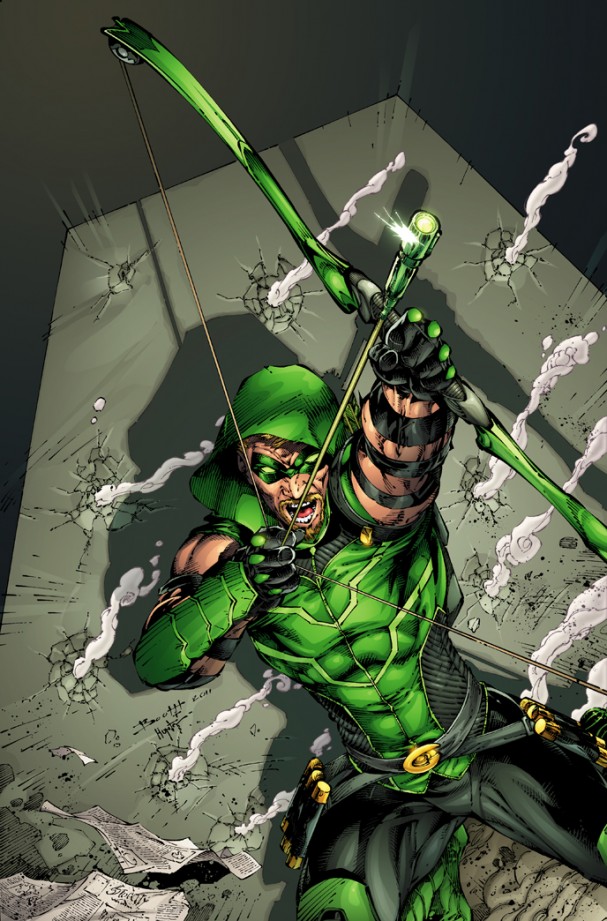

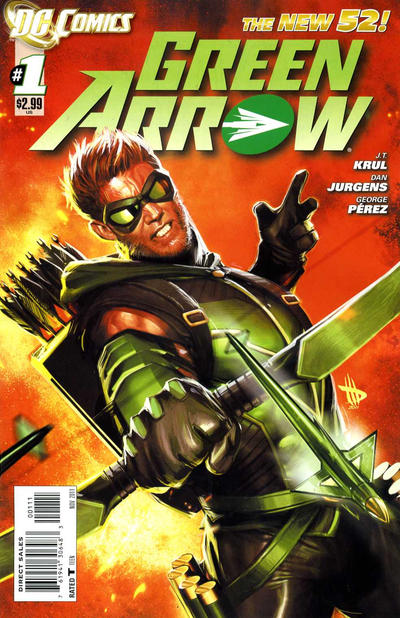


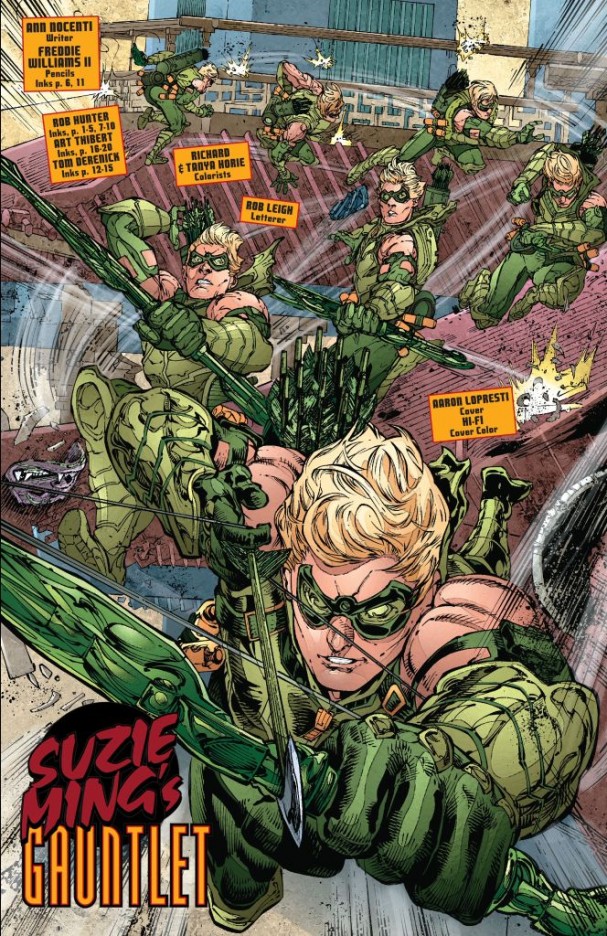

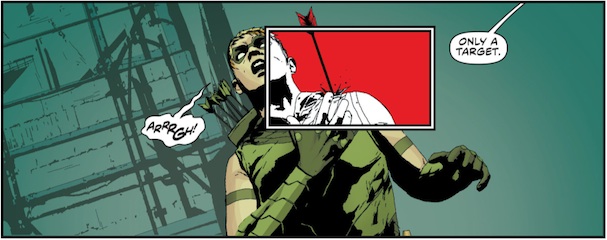
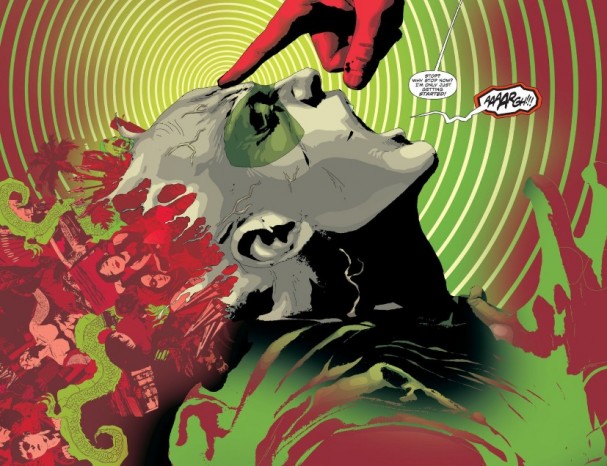
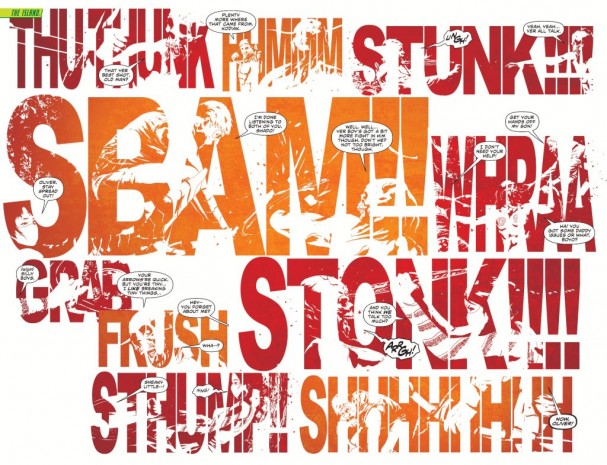
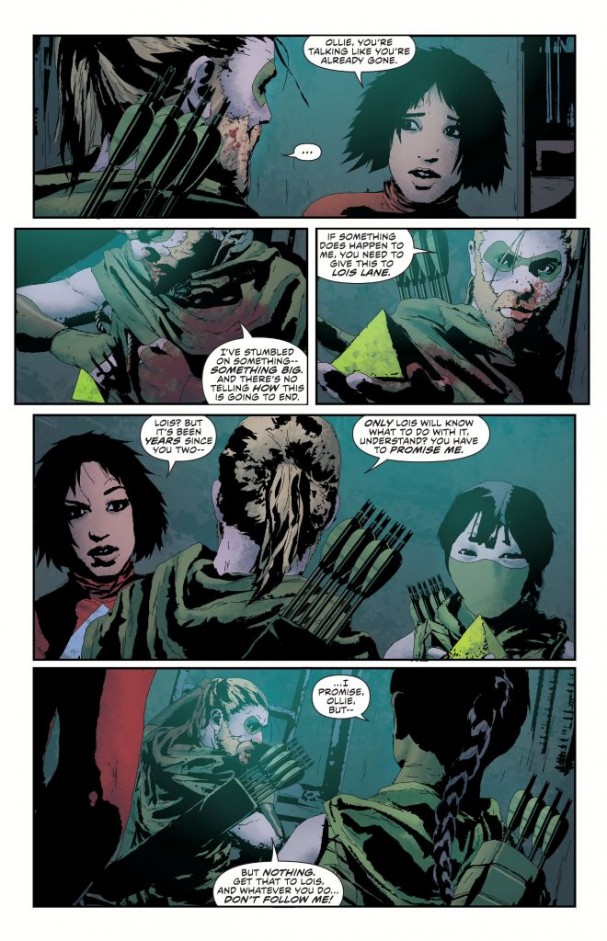
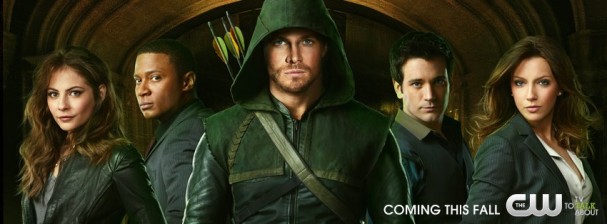

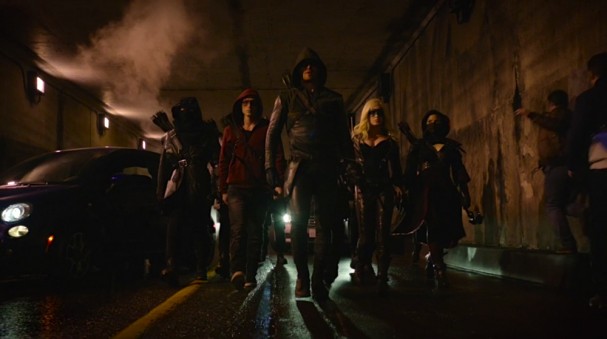
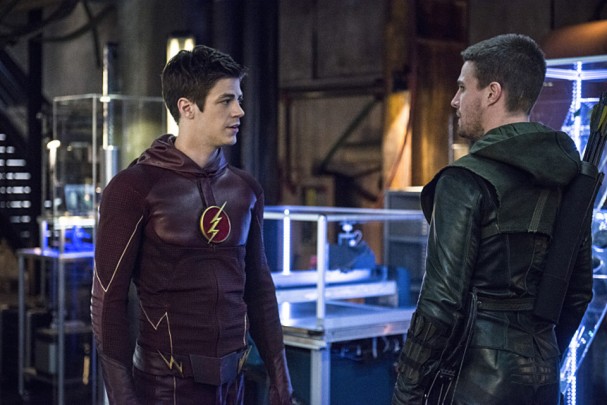
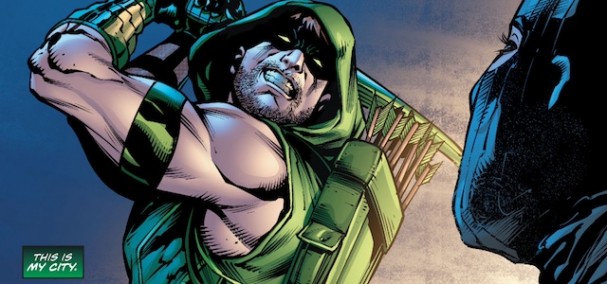
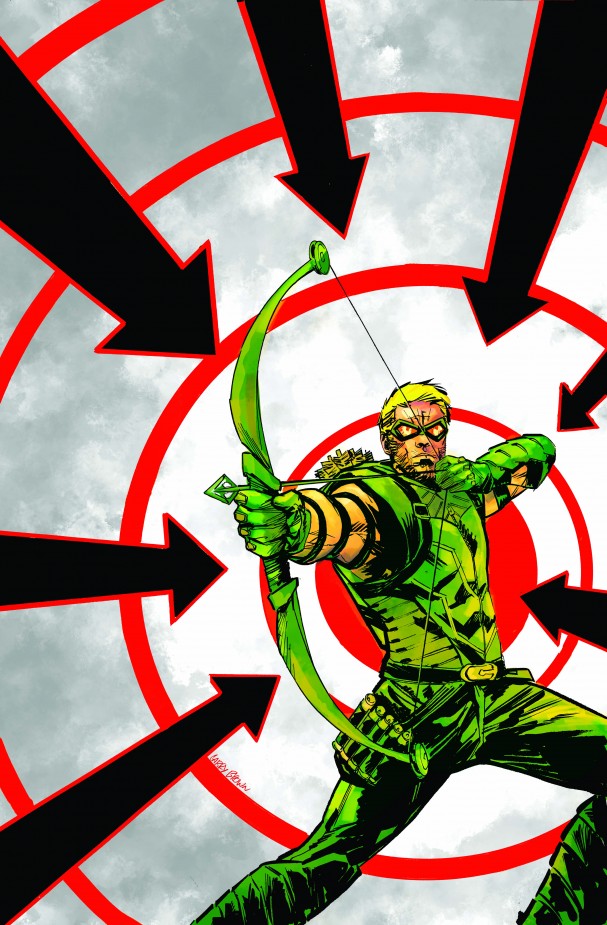
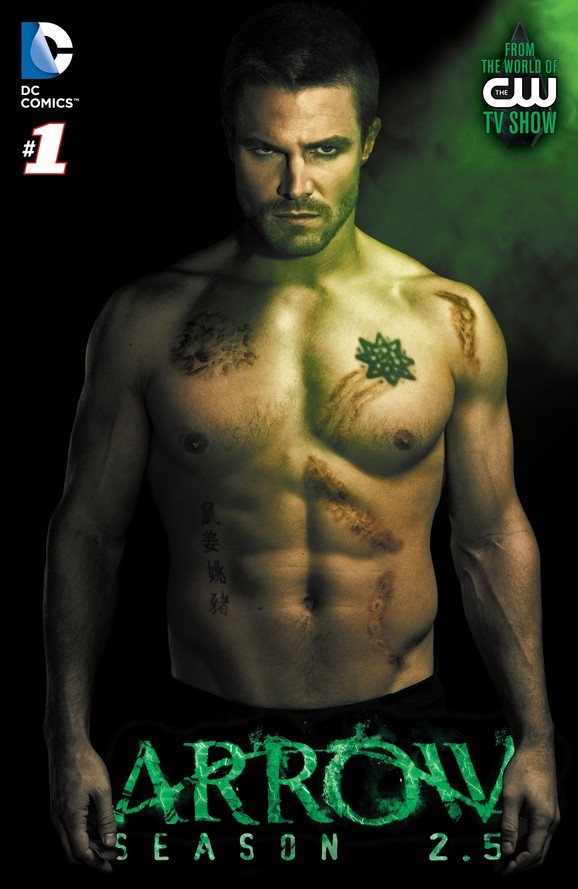
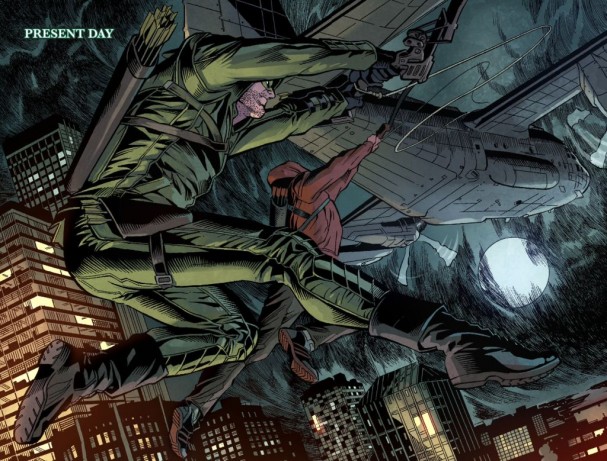
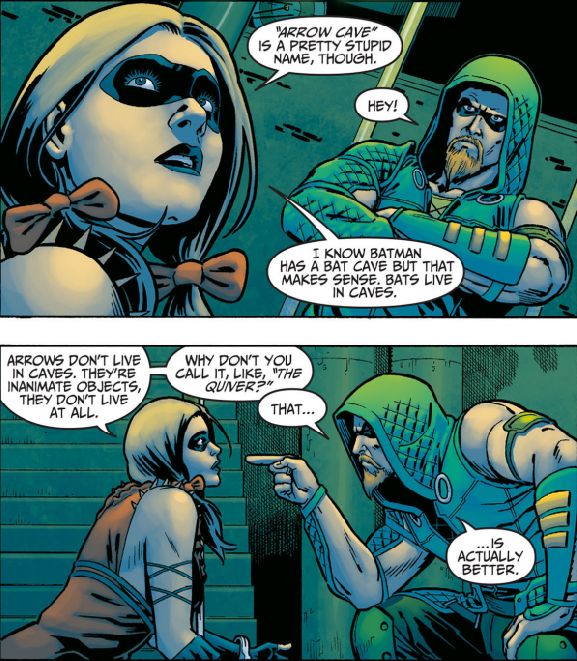
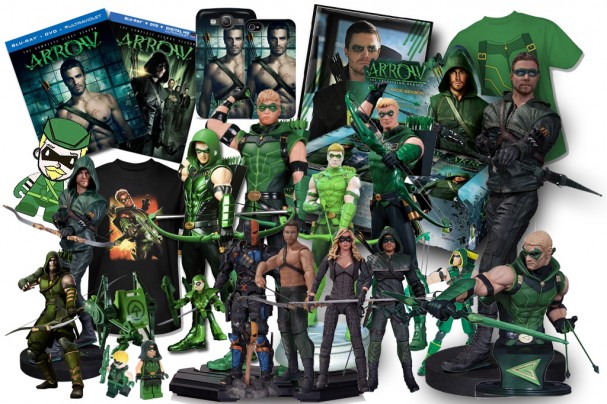
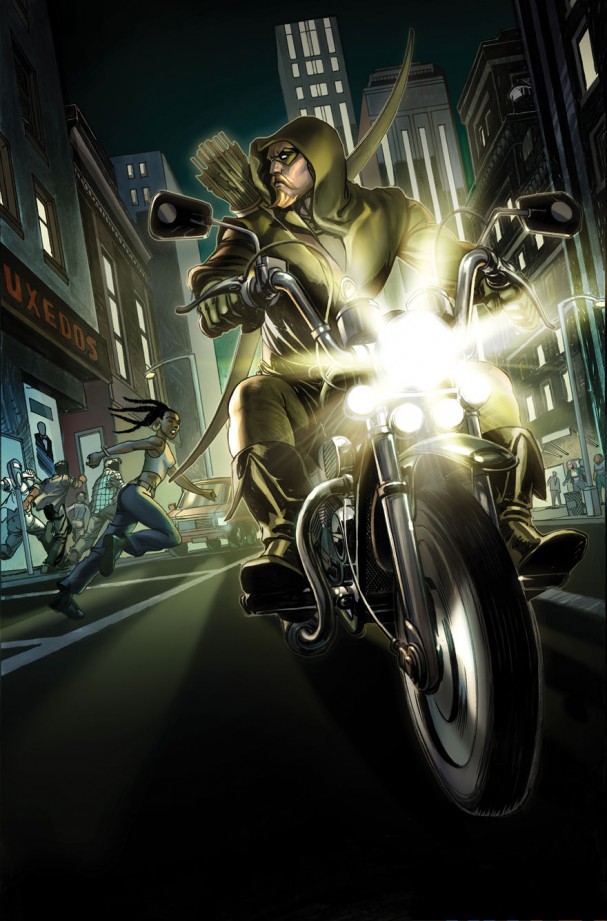


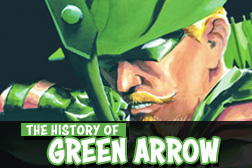
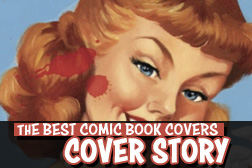
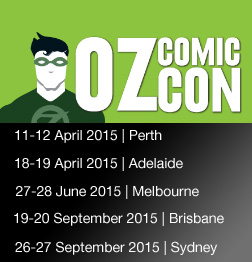





7 pings
Skip to comment form
[…] >>Proceed to Part 7>> […]
[…] Jeff Lemire swaps out green arrows for purple ones in the ALL-NEW HAWKEYE (Marvel, March 2015), where Lemire and Eisner Award-winning […]
[…] The History of Green Arrow Part 7 – Losing the Beard: The New 52, ‘Arrow’ and the Contemp… […]
[…] The History of Green Arrow Part 7 – Losing the Beard: The New 52, ‘Arrow’ and the Contemp… […]
[…] The History of Green Arrow Part 7 – Losing the Beard: The New 52, ‘Arrow’ and the Contemp… […]
[…] The History of Green Arrow Part 7 – Losing the Beard: The New 52, ‘Arrow’ and the Contemp… […]
[…] there has been one consistent throughout GREEN ARROW‘s run since the New 52 re-launch, it’s been change. The post-Flashpoint character struggled to find an identity throughout […]